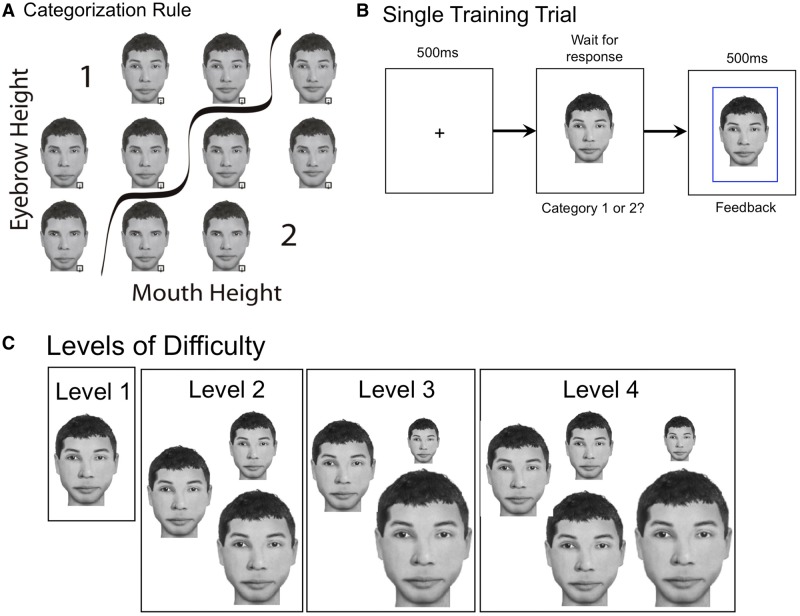Figure 1.
Examples of stimuli from the training task. (A) A matrix image of one template training face depicting the categorization rule: faces with higher eyebrows and lower mouths are in Category 1 and those with lower eyebrows and higher mouths are in Category 2. (B) Example of a single self-paced training trial with feedback indicating the trial was correct. (C) The face stimuli sizes used in each different difficulty level of training. Level 1 included faces 3.5° × 5.2° in size (100% size). Level 2 included one-third of the stimuli at 100%, one-third at 2.6° × 3.9° (75%), and one-third at 4.4° × 6.6° (125%). Level 3 included one-third of the stimuli at 100%, one-third of the stimuli at a visual angle of 1.8° × 2.6° (50%), and one-third of the stimuli at a visual angle of 5.3° × 7.9° (150%). Level 4 included all five previous stimulus sizes distributed equally.

